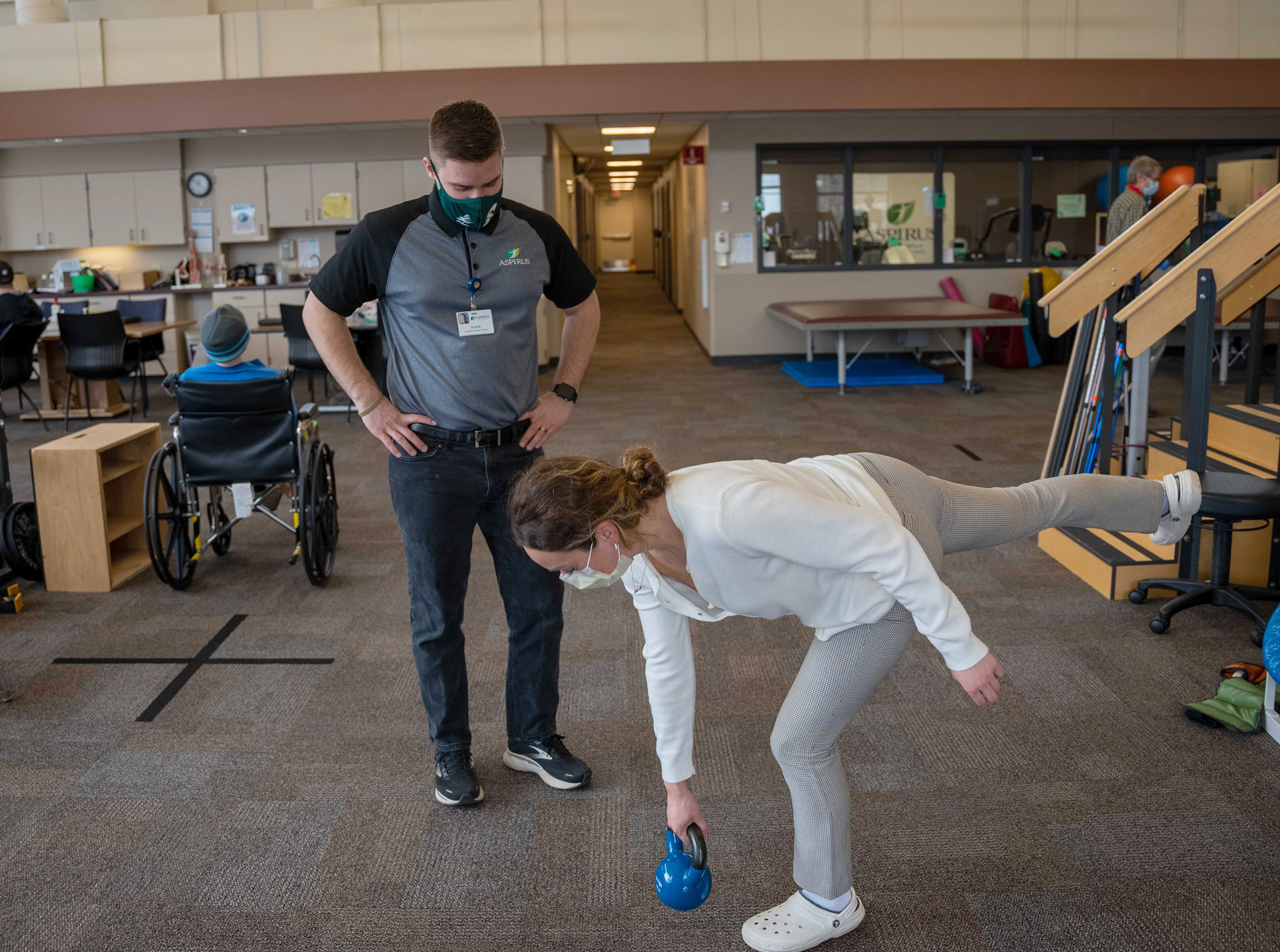How to Reduce the Risk of Injuries in Young Athletes
April is National Youth Sports Safety Month
4/6/2023

Athletic Trainer, Blade Cameron
Having children participate in sports is an important
part of a healthy and active lifestyle. Unfortunately, sports injuries can, and
do, occur.
According to the Centers for Disease Control and
Prevention (CDC), more than half of the seven million sports and
recreation-related injuries that occur each year are sustained by youth between
ages five and 24.
Aspirus Athletic Trainer Blade Cameron says, “in high school and junior high athletics there are
three types of injuries I see most often. The first would be ankle sprains,
which occur from an overstretching of the ligaments, second would be various
forms of tendonitis in certain joints such as the knees, elbows or wrists, and
lastly soft tissue injuries such as muscle strains in the quad, hamstring, or
groin.”
However common, there are still several ways to keep children active while also reducing their risk of a
sports related injury.
Gear up – Whether during practice or games, athletes should be using protective
gear, such as helmets, wrist guards and knee and elbow pads in addition to any
other sports gear appropriate to their activity or player position.
Use the right stuff – Be sure that sports protective equipment is
maintained correctly and is in good condition. Poorly fitted equipment may be
uncomfortable and may not offer proper protection.
Practice makes perfect – Have athletes learn and practice skill sets
relevant to their chosen activity. For example, appropriate tackling technique
is important in preventing injuries in football and soccer. Correct
biomechanics, or movement and alignment, also plays a role in preventing
injuries during baseball, softball, and many other activities.
Be well conditioned – Be sure to safely and slowly increase activities to
improve physical fitness; being in good condition can protect players from
injury.
Hydration and nutrition – Remind athletes to take care of their bodies by
making sure they are properly hydrated and eating a well-balanced meal.
Be a good model – Communicate positive messages about safety and
serve as role models for safe behavior, including a wearing helmet and
following the rules.
“When it comes to recovery, every athlete and injury
is going to be different. On the milder end, some athletes can see relief from
an injury within a hand full of days, but the injury may take a week or two to
completely heal. In more severe injuries, healing and recovery can take upwards
of a year, especially in surgical cases,” says Cameron.
Safety and health should be a top priority for coaches
and parents to keep athletes in the game and having fun, this includes
listening to players’ concerns and identifying injuries.
They can also encourage players to be honest if they
are experiencing pain and not to push through it. If an injury does occur,
parents and athletes can follow the acronym RICE to aid recovery.
Rest and protect the injured or sore area.
Ice or use a cold pack as soon as possible.
Compression, or wrapping the injured or sore
area with an elastic bandage.
Elevation (propping up) the injured or sore
area.
“When players push through pain or mild injuries it
can increase their risk of developing a more severe injury that, in the end,
may involve surgery and decrease their time playing the sport they love. We
want our athletes to enjoy their sport and get as much playing time as they can
without sacrificing their health and wellbeing,” says Cameron.

Back to all Posts